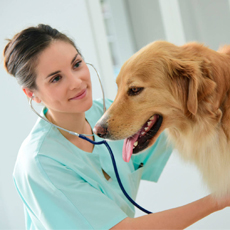- Afrikaans
- Albanian
- Amharic
- Arabic
- Armenian
- Azerbaijani
- Basque
- Belarusian
- Bengali
- Bosnian
- Bulgarian
- Catalan
- Cebuano
- Corsican
- Croatian
- Czech
- Danish
- Dutch
- English
- Esperanto
- Estonian
- Finnish
- French
- Frisian
- Galician
- Georgian
- German
- Greek
- Gujarati
- Haitian Creole
- hausa
- hawaiian
- Hebrew
- Hindi
- Miao
- Hungarian
- Icelandic
- igbo
- Indonesian
- irish
- Italian
- Japanese
- Javanese
- Kannada
- kazakh
- Khmer
- Rwandese
- Korean
- Kurdish
- Kyrgyz
- Lao
- Latin
- Latvian
- Lithuanian
- Luxembourgish
- Macedonian
- Malgashi
- Malay
- Malayalam
- Maltese
- Maori
- Marathi
- Mongolian
- Myanmar
- Nepali
- Norwegian
- Norwegian
- Occitan
- Pashto
- Persian
- Polish
- Portuguese
- Punjabi
- Romanian
- Russian
- Samoan
- Scottish Gaelic
- Serbian
- Sesotho
- Shona
- Sindhi
- Sinhala
- Slovak
- Slovenian
- Somali
- Spanish
- Sundanese
- Swahili
- Swedish
- Tagalog
- Tajik
- Tamil
- Tatar
- Telugu
- Thai
- Turkish
- Turkmen
- Ukrainian
- Urdu
- Uighur
- Uzbek
- Vietnamese
- Welsh
- Bantu
- Yiddish
- Yoruba
- Zulu
lis . 07, 2024 11:59 Back to list
Injectable Ivermectin Dosage Guidelines for Goats in Veterinary Practice
Ivermectin for Goats Injectable Dosage Chart and Guidelines
Ivermectin is a widely used antiparasitic medication that plays a crucial role in the health and management of goat populations. This medication is particularly effective against a range of internal and external parasites, ensuring the best possible health for your livestock. Understanding the correct dosage and administration methods is essential for maximizing its effectiveness while minimizing the risk of adverse reactions.
What is Ivermectin?
Ivermectin belongs to a class of drugs known as avermectins, which are derived from the soil bacterium *Streptomyces avermitilis*. It works by interfering with the nervous system of parasites, leading to paralysis and death. This makes it a valuable agent against nematodes, mites, and certain types of ticks, among others.
Injectable Ivermectin Dosage for Goats
The dosage of ivermectin can vary based on the specific formulation and the health status of the goat, but a common dosage for injectable ivermectin is typically around 0.2 mg per kg (0.09 mg per lb) of body weight. The injectable form is often preferred for its swift absorption and effectiveness.
Dosage Chart
Here’s a simplified dosage chart for injectable ivermectin based on the weight of the goat
- 25 kg (55 lbs) 5 mg (1 ml of 1% solution) - 50 kg (110 lbs) 10 mg (2 ml of 1% solution) - 75 kg (165 lbs) 15 mg (3 ml of 1% solution) - 100 kg (220 lbs) 20 mg (4 ml of 1% solution) - 125 kg (275 lbs) 25 mg (5 ml of 1% solution)
It is important to note that this chart is a guideline; consulting a veterinarian is always recommended before administering any medication
.ivermectin for goats injectable dosage chart

Administration Method
Injectable ivermectin can be administered either intramuscularly (IM) or subcutaneously (SC). The choice of the injection site is vital for ensuring the most effective absorption. Common sites include
- Neck Just behind the ear or the shoulder region for subcutaneous injections. - Muscle tissues The neck muscle can also be used for intramuscular injections.
Important Tips - Use sterile equipment to prevent infections. - Ensure the injection site is clean and free of contaminants. - Follow proper withdrawal times, especially if goats are raised for meat or milk production.
Potential Side Effects
While ivermectin is generally safe when administered correctly, some goats can experience mild side effects. These may include
- Temporary lethargy - Mild swelling at the injection site - Gastrointestinal upset
If you observe any severe reactions or if a goat exhibits difficulty breathing, excessive salivation, or other unusual behaviors, immediate veterinary attention is required.
Conclusion
In the management of goat herds, the use of injectable ivermectin is a valuable tool for controlling parasite loads and promoting overall health. However, responsible usage through proper dosing and administration is crucial. Always consult with a veterinarian for personalized advice and support, especially if this is your first time administering ivermectin to your goats. With the right practices in place, you can help ensure that your goats remain healthy and productive throughout their lives.
-
Guide to Oxytetracycline Injection
NewsMar.27,2025
-
Guide to Colistin Sulphate
NewsMar.27,2025
-
Gentamicin Sulfate: Uses, Price, And Key Information
NewsMar.27,2025
-
Enrofloxacin Injection: Uses, Price, And Supplier Information
NewsMar.27,2025
-
Dexamethasone Sodium Phosphate Injection: Uses, Price, And Key Information
NewsMar.27,2025
-
Albendazole Tablet: Uses, Dosage, Cost, And Key Information
NewsMar.27,2025













